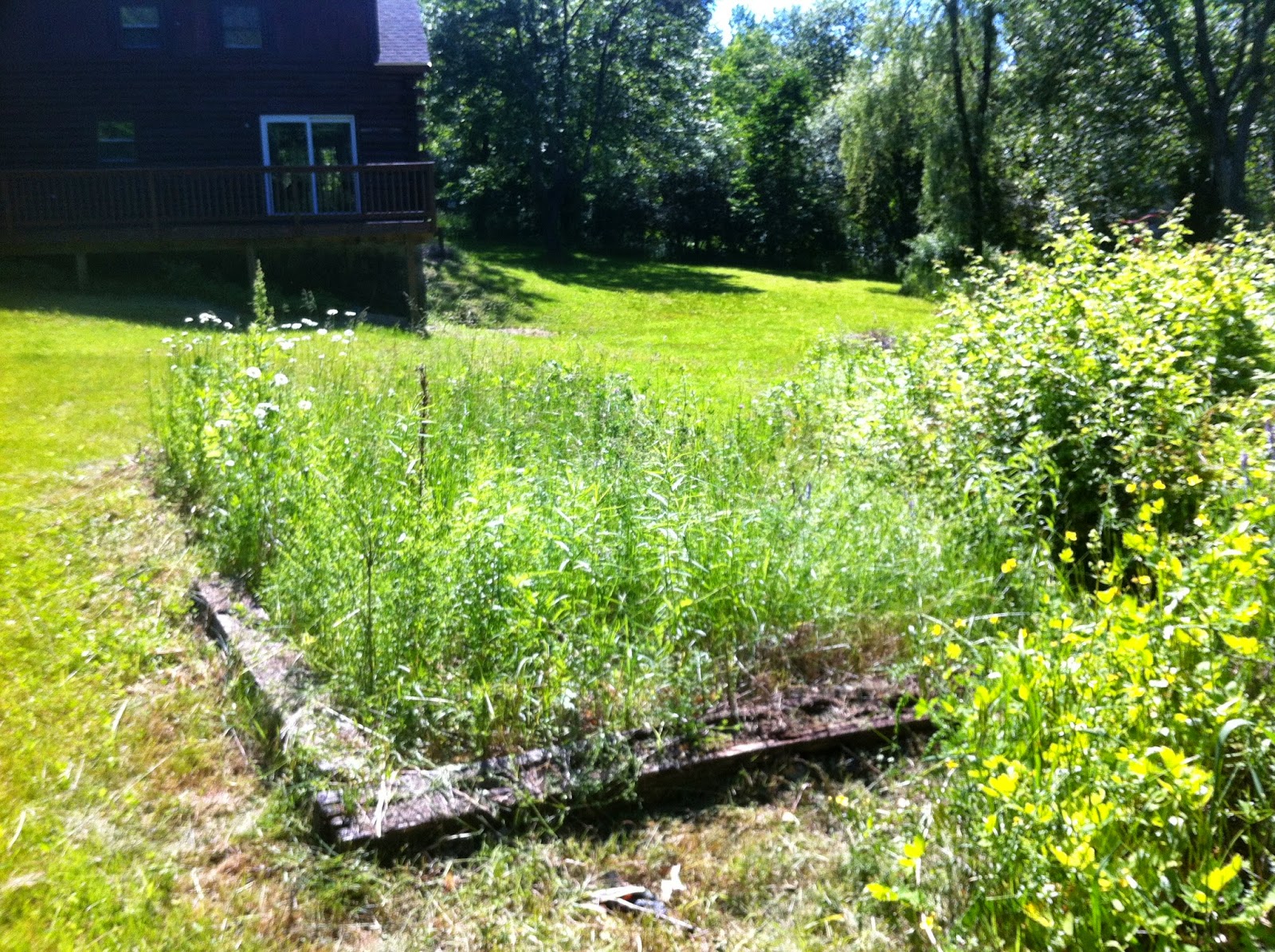When I began pulling up the weeds that had overtaken the planter box in my new back yard, the intent was to pull up everything and start again from scratch. However, as I got further in, there were some plants I found that interested me. There were some huge red clover plants, which my bunnies love to snack on. I found some stray morning glories, which are one of my favorite types of flower. There were also some plants I could not immediately identify.
The first one was a vine that sprouted tufts of purplish-blue, tiny, bell-shaped flowers. As I was working, bumble bees and monarch butterflies would land to feed on the nectar, mere inches from my head. It brought a smile to my face every time. After some research, I found out it was Vicia cracca, also known as cow vetch or bird vetch. It's used to feed some forms of livestock and increase their milk production. I don't have any animals of this type yet, so it serves me little practical purpose. I decided to leave it anyway, because of the insect life it attracted. We also caught a glimpse of a hummingbird once. I want to encourage these lovely pollinators to keep returning to my property.
Another one that caught my interest wasn't anything special visually. When I pulled it up, though, or damaged the leaves in any way, it exuded a sweet herbal aroma. I became convinced that it must be some kind of herb. I was wrong. It was Galium asprellum, or rough bedstraw. Back when mattresses were stuffed with hay, this was often used, but the stems have little hairs, which become prickly when the plant is dry, hence the name. I did find that it has some medicinal uses, specifically calming symptoms a friend of mine with a chronic condition experiences. I offered her some. If it helps, I'll keep growing it.
At this point, I was still uprooting unwanted plants. I would have to decide before the next phase whether I was going to continue working around the plants I was keeping, or if it would be better to transplant them. That's a story for another day.






























